I was researching global internet freedom recently when I discovered Turkmenistan’s approach to internet regulation—a system so restrictive it left me speechless. In this Central Asian nation, the government controls absolutely everything citizens can see online. Not just certain websites—their entire digital experience. This isn’t some dystopian scenario; it’s everyday life for Turkmen citizens.
When you and I complain about slow WiFi, Turkmens face a completely different reality: a tightly controlled internet where the government monitors everything, blocks access to most of the world’s websites, and punishes anyone who tries to bypass these restrictions. Their experience offers you a rare glimpse into how authoritarian regimes manipulate online spaces to maintain control.
Let me walk you through what makes Turkmenistan’s approach to internet regulation so extreme and why it matters—even if you’ve never heard of this Central Asian nation before.
The Digital Chokehold: How Turkmenistan Controls the Internet
You know how you can choose between different internet providers? Turkmen citizens can’t. The government doesn’t gradually restrict internet freedom—they strangle it completely through a monopoly system that gives them total control over what citizens can access.
The State’s Digital Monopoly: One Provider Controls Everything
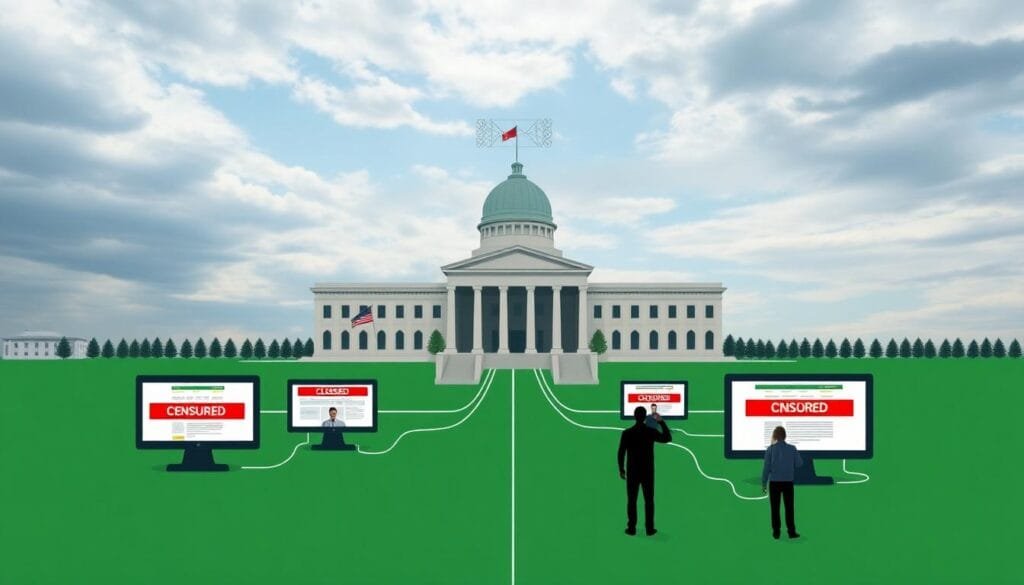
The government runs Turkmentelecom, the country’s only Internet Service Provider. Think about that for a second—imagine if your government controlled the only company allowed to provide internet access in your entire country.
What happens when a government monopolizes internet access? Turkmen citizens pay some of the highest internet costs worldwide while suffering speeds that make early 2000s dial-up seem lightning-fast. The government blocks any platform that might allow free expression—Facebook, YouTube, Twitter—they’re all inaccessible. Learn more about Turkmenistan’s telecom monopoly here.
Want to create a website in Turkmenistan? You’ll need servers located inside the country and government-issued licenses. These requirements create barriers that effectively prevent independent voices from establishing an online presence.
Who Gets Online? The Digital Class Divide
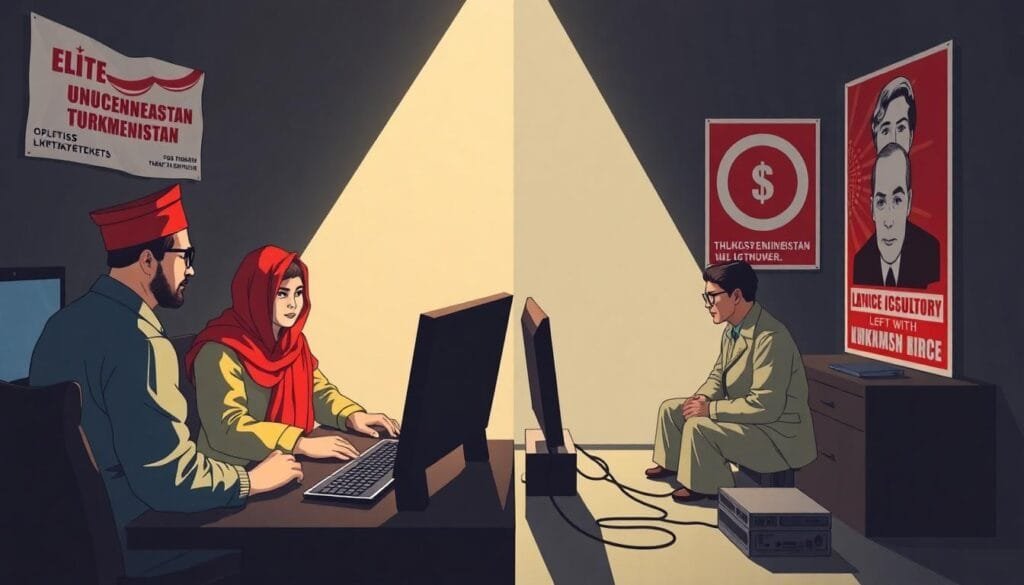
Despite the government’s iron grip, only about 38% of Turkmenistan’s population can access any internet at all. Most of these users belong to the elite class—government officials and those with regime connections. Everyone else must use “Turkmenet,” a heavily censored state-controlled intranet filled with propaganda.
Why can’t most people get online? The cost alone puts internet access out of reach. Average citizens would need to spend up to 76% of their monthly wages just to get online—imagine spending three-quarters of your paycheck just to check email or read the news. Half the population lives in rural areas with minimal or no connectivity infrastructure. A deeper dive into these barriers is available here.
These financial and infrastructure barriers transform digital access from a basic utility into a luxury, keeping most citizens disconnected from global information and firmly within the government’s information bubble.
Inside the Digital Prison: How Turkmenistan Blocks Information
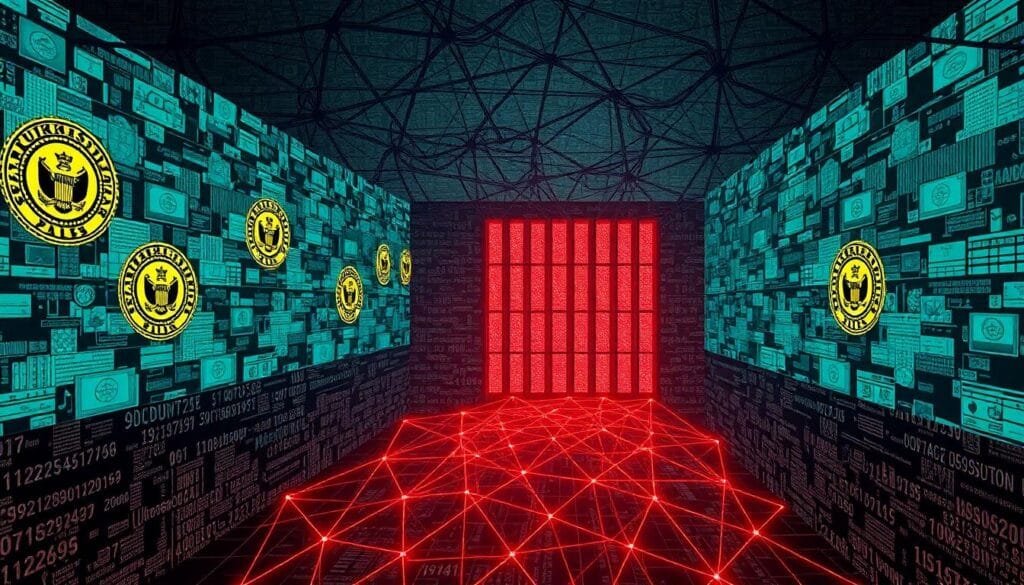
The Turkmen government doesn’t just limit internet access—they’ve built a comprehensive digital prison through systematic censorship and constant surveillance. Let me show you how this system works.
The Invisible Wall: Content Filtering Systems
The government blocks an estimated 122,000+ domains and continuously adds new websites to this blacklist. When I researched this, I couldn’t believe the scope:
- Want independent news? You won’t find BBC, Radio Free Europe, or any objective coverage of world events.
- Need to contact friends abroad? Forget social media—Facebook, Twitter, YouTube don’t exist in Turkmenistan’s digital space.
- Looking for educational resources? Even legitimate educational websites often end up blocked.
- Trying to bypass these restrictions? The government immediately blocks any VPN or circumvention tool they detect.
How do they block so many websites? They use multiple technical approaches:
- Keyword filtering: The system automatically blocks any domain containing certain terms. Type “VPN” into a search bar, and your entire browser might stop working. Learn more about these methods.
- DNS manipulation: The government alters DNS queries so your attempts to visit banned websites either fail completely or redirect to government-approved pages.
- Breaking encryption: Even encrypted connections offer no safety. Authorities use deep-packet inspection to block or disrupt secure connections.
These techniques create a digital environment where even basic browsing becomes an obstacle course of blocks and dead ends.
Digital Surveillance: The Constant Watching
The surveillance aspect might worry you even more than the blocking. Privacy simply doesn’t exist in Turkmenistan’s digital space.
- Constant monitoring: The government tracks everything on any platform they allow—your messages, posts, and search queries all feed into their surveillance system.
- Physical device checks: Police regularly stop people on the street—even schoolchildren—to physically inspect their phones for unauthorized apps or VPNs.
- Harsh punishments: Using a VPN can land you in prison for up to 7 years. Officials have forced some citizens to swear on religious texts that they won’t use circumvention tools. When avoiding censorship requires breaking a religious oath, you know you’ve entered extreme territory. Learn more about these risks here.
Journalists and activists face even greater dangers. Sharing anything critical about the government—or even documenting actual internet speeds that contradict official claims—can result in arrest or worse. According to VPN Super, these practices place Turkmenistan among the world’s most repressive digital regimes.
In this environment, your online activity becomes a potential threat to your physical freedom—a reality far removed from the internet experience most of us take for granted.
How Censorship Cripples a Nation’s Future
When a government controls information as tightly as Turkmenistan does, the effects spread throughout society. The impact goes far beyond inconvenience—it fundamentally limits human potential.
The Education Gap: Creating a Lost Generation
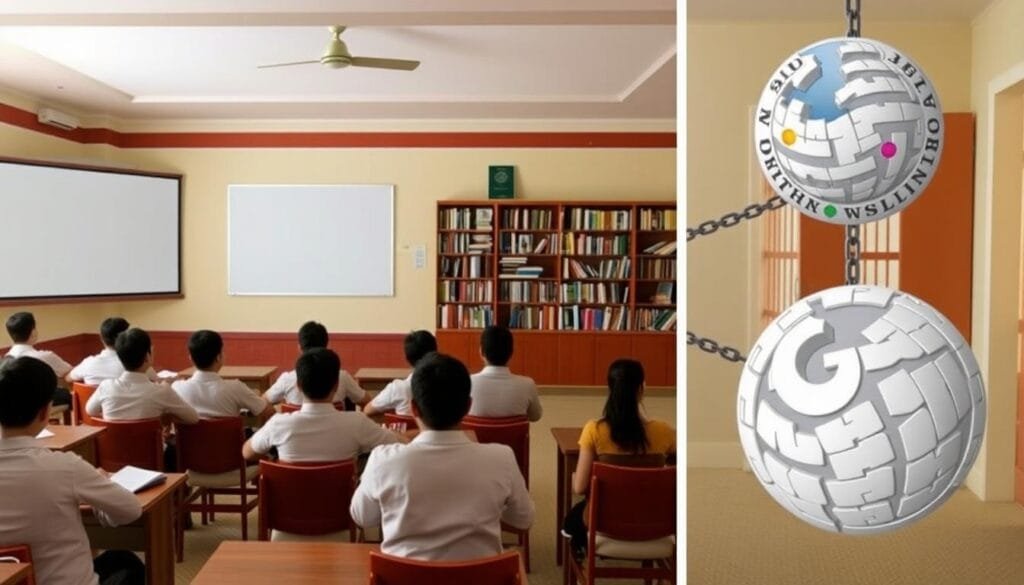
Think about how often you use the internet for learning. Now imagine trying to complete a research project without Google, scientific journals, or educational videos. Turkmen students face this reality every day. The restricted internet:
- Prevents students from accessing global educational resources
- Severely limits research capabilities
- Creates a digital literacy gap compared to global standards
- Isolates young people from international perspectives and debates
This education gap extends far beyond the classroom. In today’s world, where digital skills determine career opportunities, Turkmenistan’s youth enter adulthood with a significant disadvantage. They cannot compete globally, develop innovative solutions, or even understand many modern technological concepts.
Internet Regulation Extremes: Turkmenistan vs. Everyone Else
How does Turkmenistan’s approach compare to other countries known for internet censorship? Even compared to other authoritarian regimes, Turkmenistan’s practices stand out—and not in a good way.
The Internet “Kill Switch”: Nationwide Blackouts for School Tests
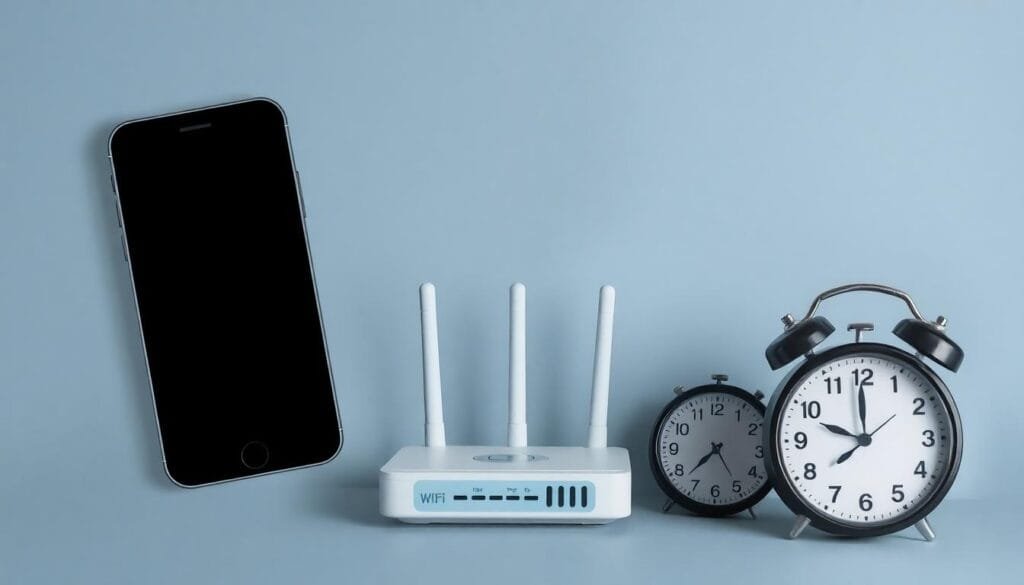
Would you believe the government regularly shuts down the entire internet during school exams? To prevent cheating, they cut off access for everyone in the country. Imagine your internet disappearing because some students are taking finals across town.
These shutdowns disrupt everything: businesses can’t process payments, families can’t communicate, and essential services falter—all because students are taking tests. In April 2023, another near-total shutdown occurred during national activities, showing how casually the government disconnects its citizens. Discover details of recent shutdowns here.
While India occasionally implements regional shutdowns for security concerns, Turkmenistan’s nationwide blackouts for routine events like exams remain practically unheard of elsewhere.
Beyond Censorship: How Turkmenistan Makes Other Restrictive Regimes Look Moderate
Let’s compare Turkmenistan with other countries known for internet restrictions:
Kazakhstan allows access to most global websites. The government might temporarily restrict access during protests, but they haven’t created a separate “intranet” system like Turkmenistan. By comparison, Kazakhstan’s approach seems almost permissive. Explore how Kazakhstan and Turkmenistan handle shutdowns here.
China blocks global platforms like Google and Facebook with its Great Firewall. However, China replaced these services with functional local alternatives. WeChat, Baidu, and Alibaba provide services that sometimes exceed their Western counterparts. Turkmenistan offers no alternatives—they block access without creating substitutes, leaving users in a digital void.
North Korea remains perhaps the only country rivaling Turkmenistan in digital isolation. While North Korea provides virtually no internet for ordinary citizens, Turkmenistan maintains an illusion of connectivity through its limited “Turkmenet”—just enough to control narratives while claiming to offer internet access. Compare global internet policies here.
What makes Turkmenistan uniquely troubling is this combination of tight control with selective access. Unlike China’s functional digital ecosystem, Turkmenistan provides no tools for growth. Unlike North Korea’s complete blackout, Turkmenistan dangles connectivity—but only on the government’s terms and primarily for elites.
What You Can Learn from Turkmenistan’s Digital Prison
Turkmenistan shows us something critical about digital rights today: when a government controls your online access this tightly, they control much more than websites—they control reality itself.
The digital walls around Turkmenistan don’t just block information; they shape perceptions, limit opportunities, and isolate millions from global conversation. In our connected world, this level of digital isolation represents a fundamental human rights issue affecting education, economic development, and basic freedoms.
As you browse freely today, remember that internet freedom requires protection. The policies shaping our online experiences affect everything from how we learn to how we connect with others.
What digital freedoms do you value most? How would your life change if someone suddenly restricted them? What responsibility do we have to speak up for those living behind digital barriers? These questions matter for all of us navigating today’s complex digital landscape.
The Pickary Hub may contain affiliate links through which we earn a commission. This comes at no additional cost to you when clicking these links.
FAQ’s:
❓ How do Turkmenistan citizens communicate if social media is banned? (Click to Expand) ▶ Most citizens use government-approved messaging apps and the restricted “Turkmenet” for communication. Some risk using VPNs despite severe penalties, while others rely on SMS and traditional phone calls, which authorities heavily monitor but still allow.
❓ Are there any signs of Turkmenistan relaxing its internet restrictions? ▶ Currently, the government shows no signs of easing restrictions. Recent reports indicate authorities have increased surveillance and expanded their list of blocked domains, suggesting a trend toward tighter control rather than openness.
❓ How do international organizations respond to Turkmenistan’s internet policies? ▶ Organizations like Human Rights Watch, Freedom House, and Reporters Without Borders regularly document and condemn these restrictions. However, the country’s isolation and closed diplomatic stance make it difficult for international pressure to create meaningful change.
❓ What happens to Turkmenistan citizens caught using VPNs? ▶ Authorities punish VPN users with fines, imprisonment for up to 7 years, intimidation, job loss, and forced public confessions. Some citizens must swear religious oaths promising to stop using circumvention tools.
❓ How does Turkmenistan’s internet control affect international business operations? ▶ Foreign businesses in Turkmenistan struggle with international communications, cloud services, financial transactions, and standard business software. Many companies must establish special protocols or dedicated satellite connections to maintain operations.






